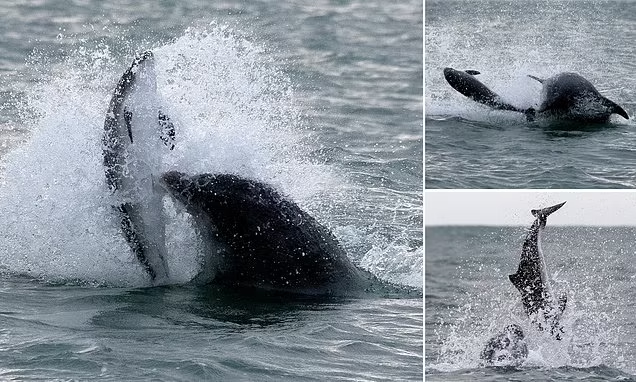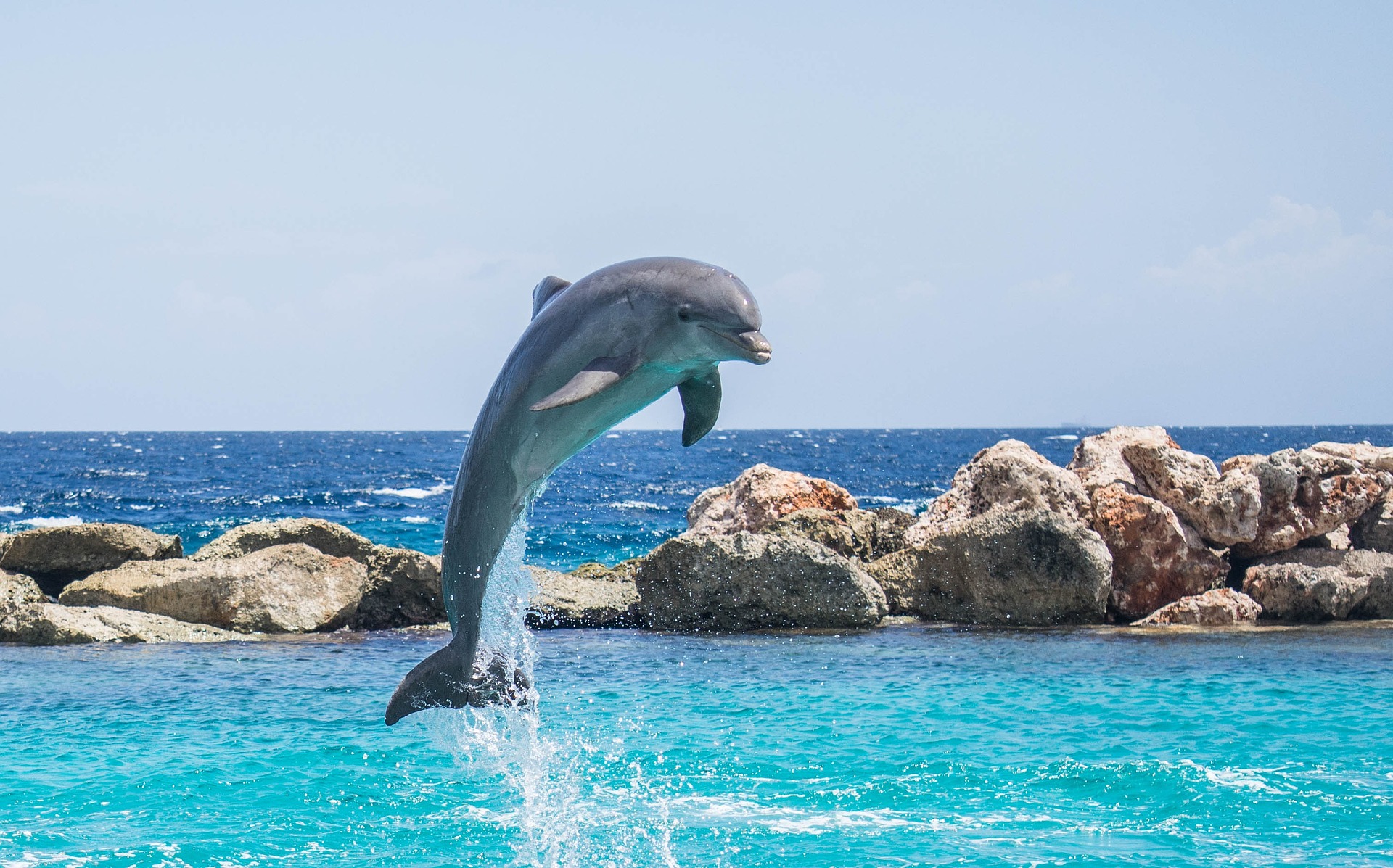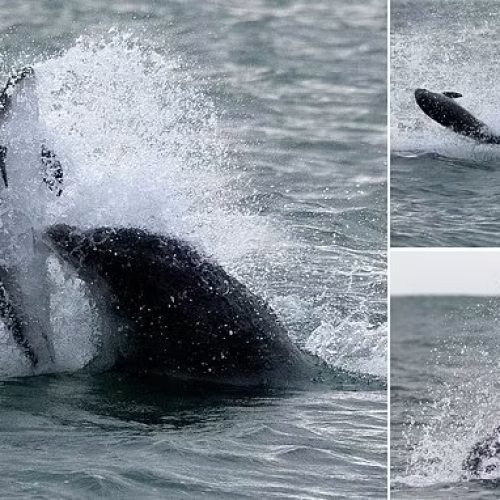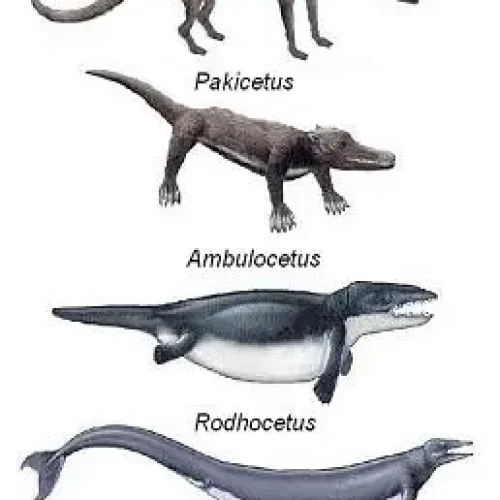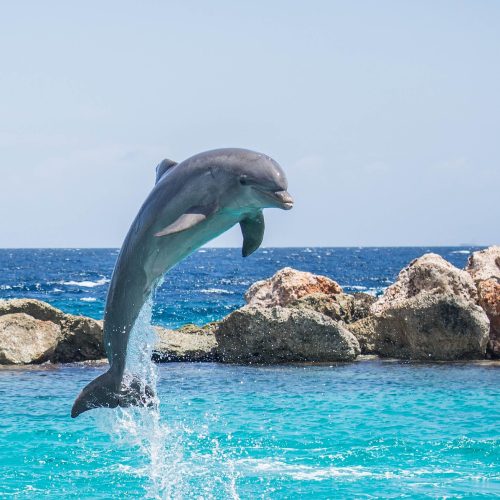In this article
FROM LAND TO SEA: THE SURPRISING ORIGINS OF DOLPHINS
Imagine strolling along an ancient shoreline, 50 million years ago. You might encounter a peculiar sight: a wolf-like creature wading in shallow waters, hunting for fish.
This isn’t a misplaced canine, but rather Pakicetus, one of the earliest ancestors of modern dolphins. Yes, you read that right – dolphins once walked on land.
Early ancestors: meet the walking whales
The journey from land-dweller to ocean navigator is a testament to the incredible plasticity of evolution. Pakicetus, with its long snout and carnivorous teeth, marks the beginning of this transformation.
This proto-whale likely spent time both on land and in water, much like modern otters.
As we move forward in time, we encounter Ambulocetus, aptly nicknamed the “walking whale” of Pakistan.
This creature, about the size of a large sea lion, had robust legs capable of supporting its weight on land. However, its powerful tail and webbed feet hint at an increasing affinity for aquatic life.
Remingtonocetus represents the next step in this evolutionary tale. With an elongated body and shorter limbs, this species was well-adapted to an amphibious lifestyle.
Its skull structure suggests improved underwater hearing, a crucial development for future marine mammals.
“Imagine strolling along an ancient shoreline, 50 million years ago. You might encounter a peculiar sight: a wolf-like creature wading in shallow waters, hunting for fish. This isn’t a misplaced canine, but rather Pakicetus, one of the earliest ancestors of modern dolphins.”
Key evolutionary changes: transforming for aquatic life
The shift from land to sea necessitated dramatic anatomical changes:
• Skeletal adaptations: Over millions of years, the forelimbs of these early whale ancestors transformed into flippers. Hind limbs gradually reduced in size, eventually disappearing entirely in modern cetaceans. The tail evolved into a powerful, horizontal fluke for propulsion.
• Breathing modifications: Perhaps one of the most striking changes was the migration of the nostrils. They slowly moved to the top of the head, evolving into the blowhole we see in dolphins today. This adaptation allows for efficient breathing at the water’s surface.
• Sensory shifts: As these animals spent more time underwater, their sensory abilities had to adapt. The development of echolocation was a game-changer, allowing dolphins to navigate and hunt in murky or dark waters with astounding precision.
This evolutionary journey, spanning millions of years, showcases nature’s incredible ability to shape life forms to new environments.
From wolf-like shore-dwellers to the sleek, intelligent swimmers we know today, dolphins serve as a remarkable example of how drastically species can change over time.
Their story reminds us that the boundaries between land and sea aren’t as fixed as we might imagine, and that life has an extraordinary capacity to adapt and thrive in diverse habitats.
FROM HOOVES TO FINS: THE GENETIC TALE OF DOLPHIN EVOLUTION
The transformation of land-dwelling mammals into sleek, aquatic dolphins is not just a story told by fossils. It’s etched into the very DNA of these remarkable creatures.
Modern genetic analysis has provided a wealth of evidence supporting the terrestrial origins of dolphins, offering a fascinating glimpse into their evolutionary past.
Genetic evidence: confirming the terrestrial connection
Delving into the dolphin genome reveals surprising remnants of their land-dwelling ancestors. Vestigial genes, like those related to limb development and hair growth, persist in dolphin DNA despite no longer serving an active purpose.
These genetic fossils serve as a testament to their terrestrial heritage.
Comparative genomics has unearthed striking similarities between dolphins and their unlikely cousins – hippos and other even-toed ungulates (artiodactyls).
This genetic kinship confirms that whales and dolphins evolved from artiodactyl ancestors, likely splitting from the hippo lineage around 55 million years ago.
The molecular clock, a technique using genetic mutations to estimate evolutionary timelines, has helped scientists pinpoint when dolphins’ ancestors returned to the sea.
This method suggests that the transition began approximately 50 million years ago, aligning with fossil evidence and providing a clearer picture of this remarkable evolutionary journey.

Ongoing evolution: how dolphins continue to adapt
Evolution didn’t stop when dolphins fully adapted to marine life. Today, we observe ongoing genetic changes as these animals continue to evolve:
• Divergence and speciation: Different marine environments have led to the evolution of various dolphin species. From the Amazon river dolphin to the deep-diving sperm whale, each species has adapted to its specific niche through genetic changes.
• Convergent evolution: Interestingly, dolphins share similar adaptations with unrelated marine species. For example, both dolphins and sharks have developed streamlined bodies and dorsal fins, despite their vastly different evolutionary origins.
• Future adaptations: As our oceans face unprecedented changes due to climate change, dolphins may need to evolve rapidly to survive. Potential genetic adaptations could include:
– Enhanced heat tolerance mechanisms
– Ability to dive deeper or stay submerged longer to access shifting food sources
– Improved immune responses to combat new diseases in warming waters
The genetic story of dolphin evolution is a testament to the incredible plasticity of life. From terrestrial mammals to ocean-dwelling cetaceans, their journey is written in every strand of their DNA.

